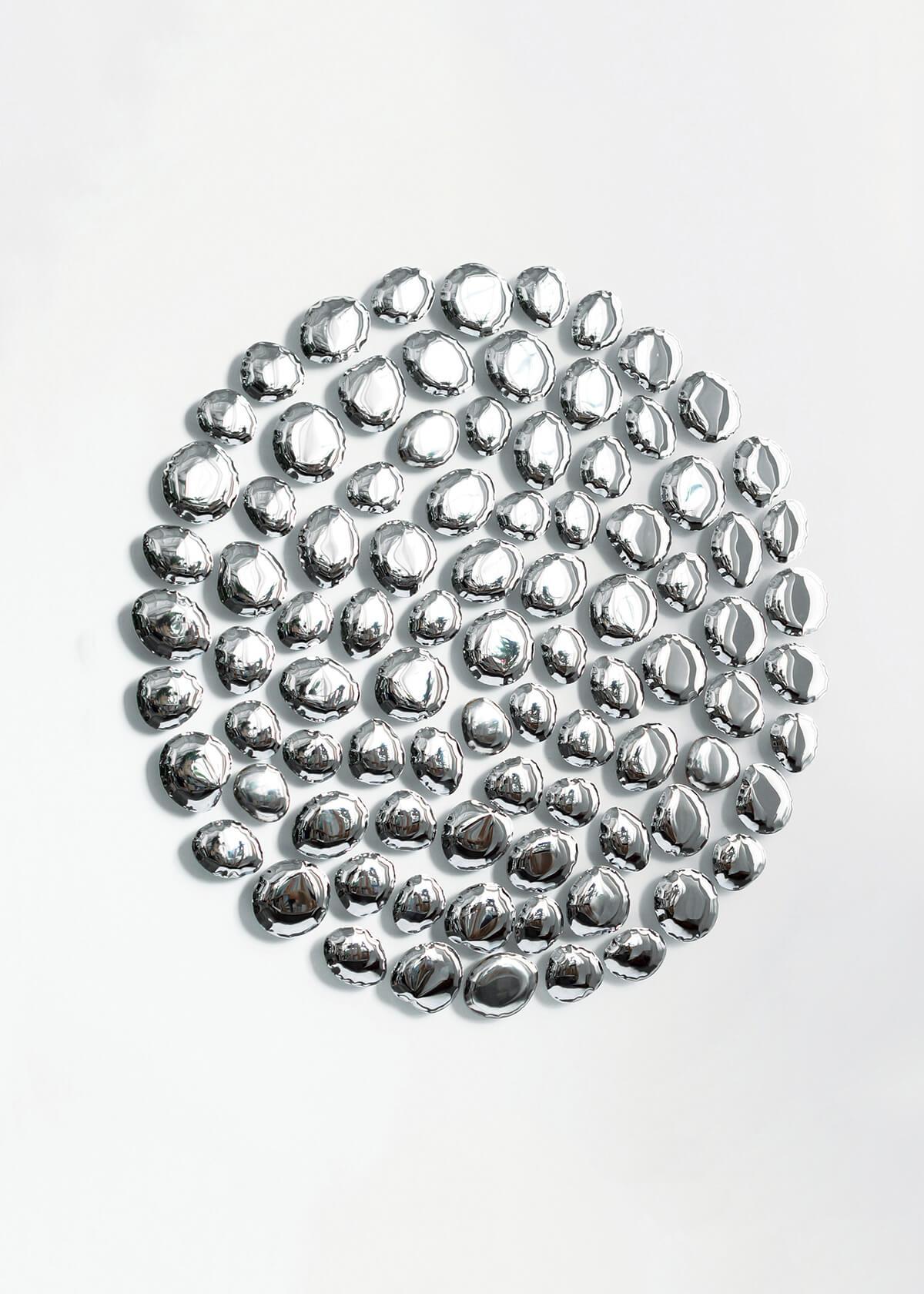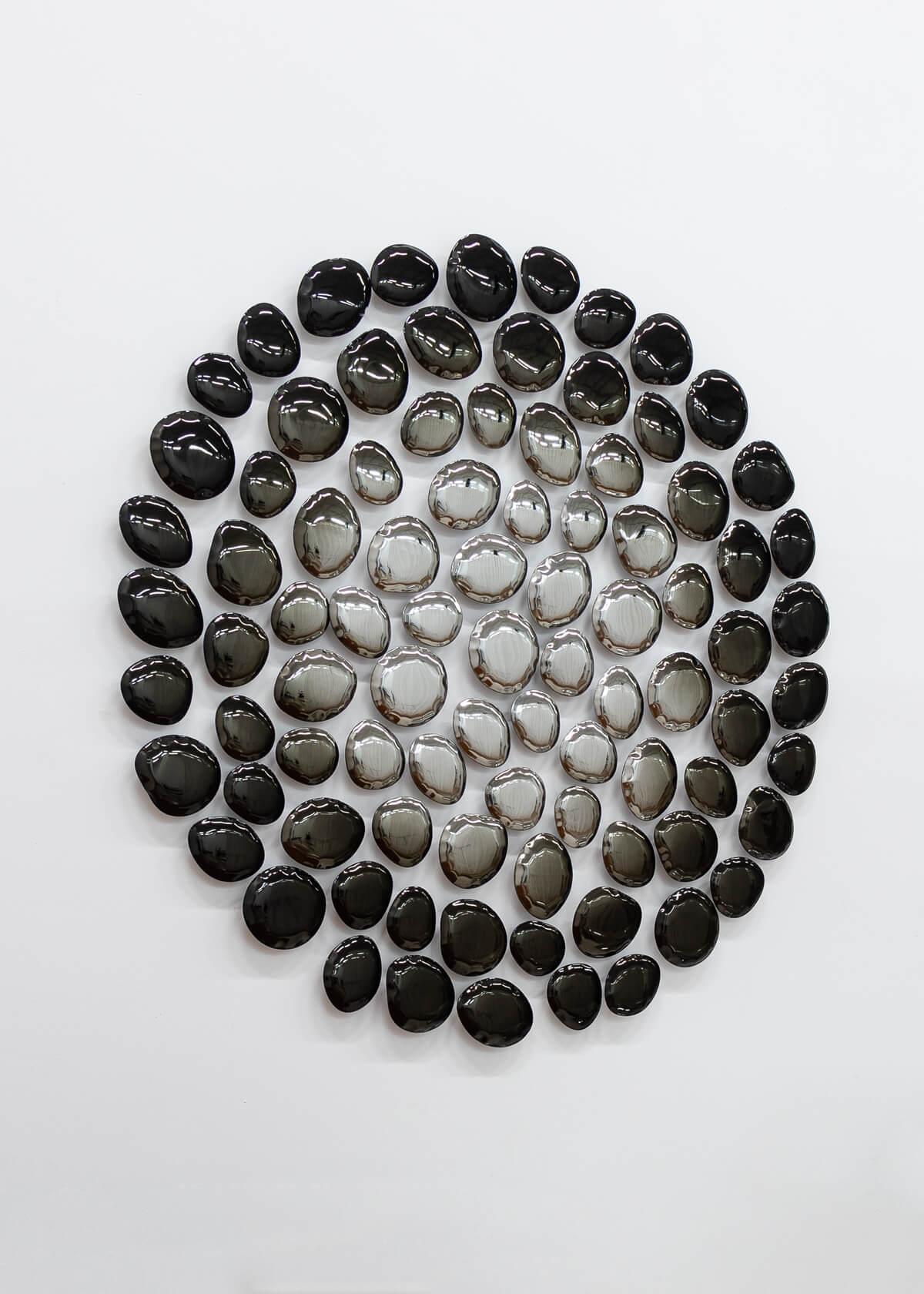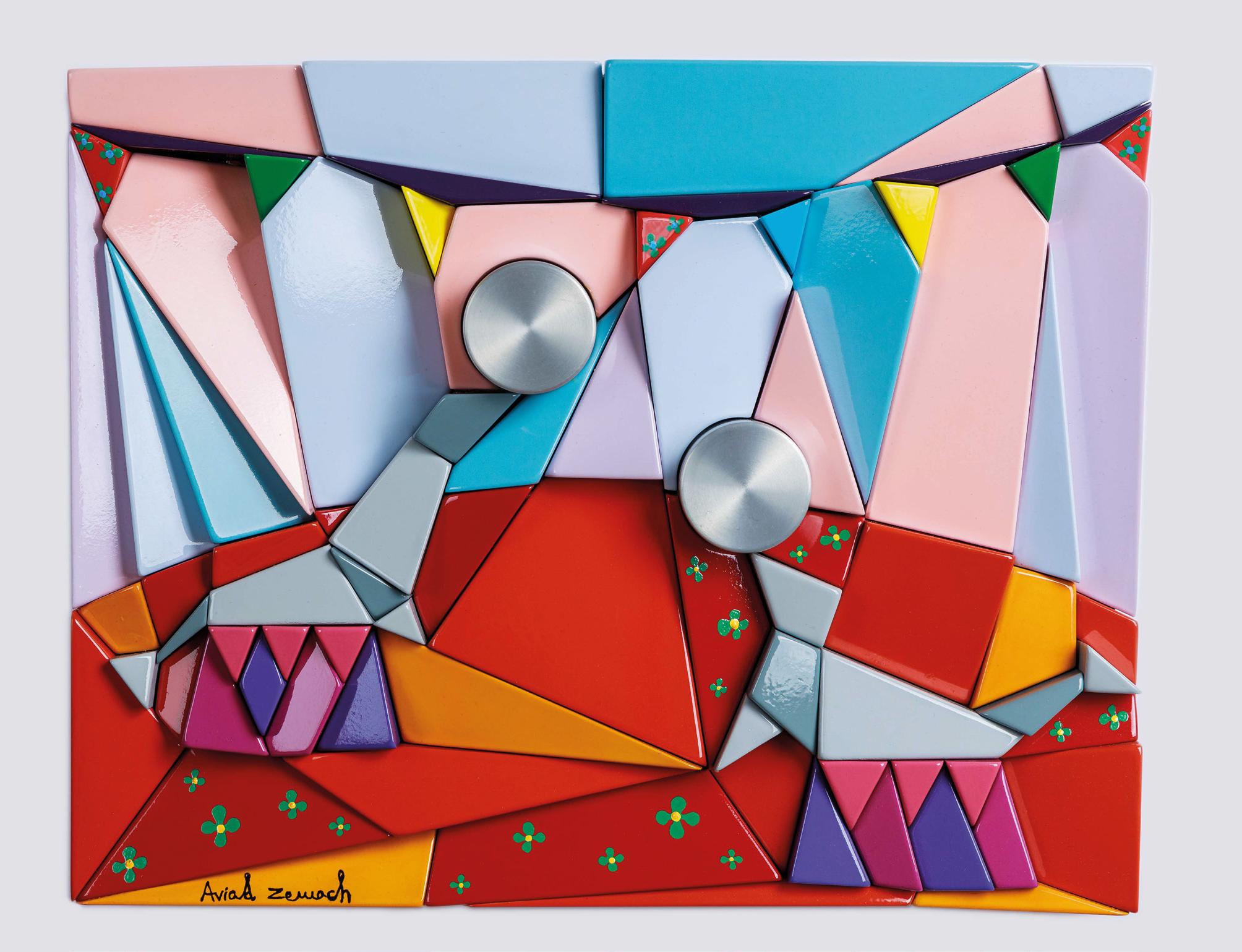Items Similar to Empreinte extrinsèque 4
Want more images or videos?
Request additional images or videos from the seller
1 of 5
Laurent LamarcheEmpreinte extrinsèque 42022
2022
About the Item
At first glance, the fields of art and science may seem like two incompatible subjects that exist on opposite sides of a spectrum, though historically speaking they have shared an intimate relationship. A famous example can be found in German biologist Ernst Haeckel’s book ‘Art Forms in Nature’, published around 1900, where his aims to combine scientific documentation with art become apparent. A similar fascination for such forms can be encountered in the artworks of Laurent Lamarche. In this exhibition Empreintes extrinsèques Lamarche continues to explore the connections between humans and nature inspired by research laboratories.
In his new series of artworks, he focuses on the transformative potential found in object and being, concentrating on the material of wax. Through its malleability and flexibility, it evokes the idea of continuous information. Its nature is indexical, capturing the slightest trace and imprints of the most subtle textures. Following the idea of a laboratory, Laurent Lamarche experiments with the physical characteristics of wax and its oscillation between solidity and liquidity.
Two main experiments are explored in this exhibition. The movement of water and understanding the invisible manifests itself in FUSE. Here Lamarche takes an interest in expressing the imperceptible laws of physics in a form perceivable to the eye by injecting molten wax into small cold pools of water. Immediately after making contact, the wax hardens and instantaneously forms its final shape. Due to being lighter than water, it captures the flow of the liquid and the textures it induces, thus making them visible. These forms resulting from an unpredictable process are then cast in aluminum, revealing the memory of water in motion.
The second idea follows the capturing of the invisible via fossilization in formation, a continuation of the Fossile series. In Fragment, the notion of trace is formed through the transformational process of wax and the subtraction of matter. Though the liquid potential of the material isn’t the focus, but rather its characteristics in the solid state and its malleability when touched by heat. Once the engraving process is finished the result is cast in aluminum. The combination of the metallic character of the sculpture with the addition of patina gives the objects an atemporal quality, resulting in the evocation of the imagination trying to place it in past and future.
The third axis of this artistic laboratory approaches working with aluminum in a different way. Moving away from transferring wax to metal, Lamarche works directly on the plate using different tools to play with the aluminum and therefore exposing its evocative power. The craters that are formed in the artworks of Canyon, together with their circular shape and shiny surface both awaken associations with the moon and inverted petri dishes.
With his experimental works coming together under the umbrella of an imaginary research laboratory for art, Lamarche breaks down boundaries between the seemingly incompatible fields of art and science, revealing the important role of the artist as a researcher and experimenter and thus the connection to science.
- Creator:Laurent Lamarche (1977, Canadian)
- Creation Year:2022
- Dimensions:Height: 21 in (53.34 cm)Width: 10 in (25.4 cm)Depth: 10 in (25.4 cm)
- Medium:
- Movement & Style:
- Period:
- Condition:
- Gallery Location:Montreal, CA
- Reference Number:1stDibs: LU47611212902
About the Seller
5.0
Vetted Seller
These experienced sellers undergo a comprehensive evaluation by our team of in-house experts.
Established in 1996
1stDibs seller since 2014
96 sales on 1stDibs
- ShippingRetrieving quote...Ships From: Montreal, Canada
- Return PolicyA return for this item may be initiated within 7 days of delivery.
More From This SellerView All
- Wildlife Passenger– SittingBy Brandon VickerdLocated in Montreal, QuebecWhat would a perfect future look like and how would it be represented for future generations to examine and question? What would we choose to preserve from high art and mainstream culture? How will our successes be depicted and will we account for our failures? Perhaps our contemporary mythologies will replace the ancient Greek and Roman gods and goddesses of yore with superheroes, extra-terrestrials and science fiction characters devastated by technological advancement. Brandon Vickerd works in a realm of unreality where the perfect future is chimeral, where there are more questions asked than answers presented. In his recent pieces currently displayed at Art Mûr, we find skeletons of humans and primates. They are dressed in spacesuits, as seen in Monument to the First American in Space, or trailing tentacles and zebra mussels in The Sub-Mariner. The pieces are evocative, and somehow manage to come across as realistic; incongruous bodies and objects have been integrated into fluid forms. Generally, there is either a lot of movement (literal as well as implied) in Vickerd’s work, or a stasis, as seen with these beings frozen in action. They are unabashed in their theatricality. The polished, vibrant sculptures in these galleries represent a kind of death and memorialization. The forms are stripped of flesh and dressed in protective suits (potentially after the implied catastrophes), which appear either manufactured or suggestive of the organic. Ghost Rider...Category
2010s Contemporary Abstract Sculptures
MaterialsBronze
- Wildlife Passenger –StandingBy Brandon VickerdLocated in Montreal, QuebecWhat would a perfect future look like and how would it be represented for future generations to examine and question? What would we choose to preserve from high art and mainstream cu...Category
2010s Contemporary Abstract Sculptures
MaterialsBronze
- Light in the boxBy Karine PayetteLocated in Montreal, QuebecWith its meticulous attention to detail, Karine Payette’s work opens up numerous reflections on the different ways we perceive reality. Payette achieves this by adroitly evoking the notion of doubt. Both playful and offbeat, her universe is built up from stripped-down stagings that conjure up private, domestic stories, and scenes from everyday life. Carefully arranging objects in space, she creates “zones of anxiety” where different elements overlap: loss of control, domination, and forms that might themselves take over. The artworks brought together in L’ombre d’un doute highlight the various touchstones of the multidisciplinary practice Karine Payette has been developing since 2010. The exhibition borrows its title from the Alfred Hitchcock film of the same name (Shadow of a Doubt), where a young girl discovers the dark side of the world. This shadowy reference evokes the fragrance of mystery that wafts among Payette’s works, and the need to decipher, like a riddle, that which takes place before our eyes. As soon as he/she enters the exhibition, the viewer is confronted with a puddle of milk covering the floor, in which he/she finds several kernels of floating Rice Krispies...Category
2010s Contemporary Figurative Sculptures
MaterialsMetal
- PantieBy Cal LaneLocated in Montreal, QuebecCal Lane is an internationally acclaimed sculptor known for turning ordinary objects into lacy artworks. She holds a Bachelor’s degree in Fine Arts from Nova Scotia College of Art an...Category
2010s Contemporary Abstract Sculptures
MaterialsMetal
- Pantie CanBy Cal LaneLocated in Montreal, QuebecCal Lane is an internationally acclaimed sculptor known for turning ordinary objects into lacy artworks. She holds a Bachelor’s degree in Fine Arts from Nova Scotia College of Art an...Category
2010s Contemporary Abstract Sculptures
MaterialsMetal
- PantieBy Cal LaneLocated in Montreal, QuebecCal Lane is an internationally acclaimed sculptor known for turning ordinary objects into lacy artworks. She holds a Bachelor’s degree in Fine Arts from Nova Scotia College of Art an...Category
2010s Contemporary Abstract Sculptures
MaterialsMetal
You May Also Like
- Mercury by Zieta, Mounted Sculpture in Stainless SteelLocated in Paris, FRMercury Set of mirrors by Zieta Poetry of multiplication Diameter 150 cm x Depth 7 cm MERCURY is a reflecting installation of 89 air-inflated, bulging, stone-like structures formin...Category
21st Century and Contemporary Contemporary Abstract Sculptures
MaterialsStainless Steel
- Mercury 'Transitions' by Zieta, Mounted Sculpture in Stainless SteelLocated in Paris, FRMercury Transitions (Dark matter) Set of mirrors by Zieta Poetry of multiplication Diameter 150 cm x Depth 7 cm MERCURY is a reflecting installation of 89 air-inflated, bulging, s...Category
21st Century and Contemporary Contemporary Abstract Sculptures
MaterialsStainless Steel
- XXXX, Jörg Bach, 2006, Lacquer and Steel, Abstract Sculpture, GermanyBy Jörg BachLocated in Greding, DESculpture „XXXX“ by Jörg Bach (born 1964, Wolgast - Germany) out of Corten and lacquer, no. 24, 116 x 333 x 133 cm. Primarily active as a sculptor - but not...Category
Early 2000s Contemporary Abstract Sculptures
MaterialsSteel
- REFLEKTOR, Jörg Bach, 2013, polished Stainless Steel, Abstract Sculpture, GermanyBy Jörg BachLocated in Greding, DESculpture „Reflektor“ by Jörg Bach (born 1964, Wolgast - Germany) out of stainless steel, no. 2, 67 x 50 x 83 cm Primarily active as a sculptor - but not on...Category
2010s Contemporary Abstract Sculptures
MaterialsStainless Steel
- Willi Siber (1949) - Floor Object, Steel and Lacquer, GermanyBy Willi SiberLocated in Greding, DELarge floor object by Willi Siber (Eberhardzell 1949) made of steel and red chrome lacquer.Category
21st Century and Contemporary Contemporary Abstract Sculptures
MaterialsSteel
- Circus Seals, Polystyrene, Metal, Acrylic Paint, Wall SculptureLocated in Jerusalem, ILCircus Seals , 2022 Polystyrene, wood, aluminum and industrial paints 35 x 45 x 5 cm 14 x 18 x 2 in As an Industrial designer, I was trained to perform the creative act of determi...Category
2010s Contemporary Figurative Sculptures
MaterialsMetal
Recently Viewed
View AllMore Ways To Browse
Used Metal Watering Can
Circular Shape Sculpture
Circular Metal Sculpture
Imaginations And Objects Of The Future
Harden Sculpture
Moon Crater
Moon Formation
Ernst Haeckel
Concrete And Wood Sculpture
Wall Light Sculpture Paper
Bronze Hotel Art Sculpture
Metal Art Sculpture For Outdoor
Moon Art Round
South American Wood Sculpture
Minimal Geometric Sculpture
Large Abstract Garden Sculpture
Abstract Large Outdoor Sculptures
Abstract Japanese Wall Sculpture




